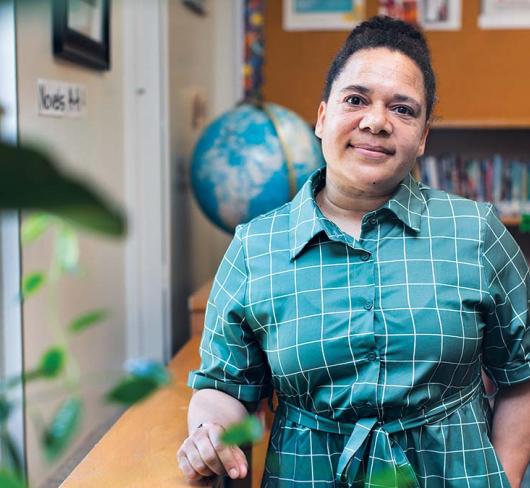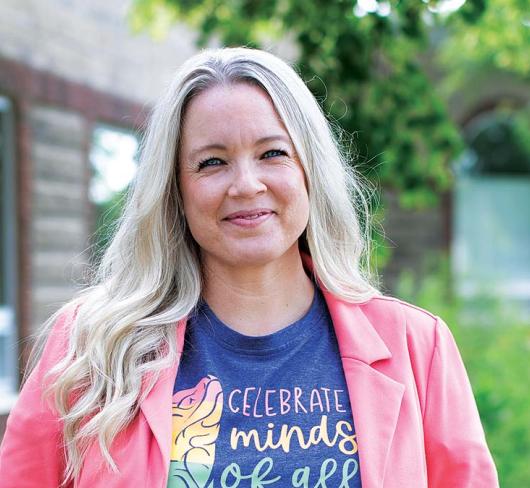Benin Big Book Project: Creating Books for Young Learners
“The more you read, the more things you will know. The more that you learn, the more places you’ll go.”
— Dr. Seuss, “I Can Read with My Eyes Shut!”
“We want to learn how best to teach young children to read but we don’t have any books,” said the teachers working in schools piloting an early years program in Benin.
During the summer of 2008 we were working in Benin, in partnership with Right To Play, the Benin Ministry of Education, and the Benin teacher union, SYNAEM, to develop and implement a new curriculum. The Benin government has undertaken a pilot program to establish play-based early learning programs in its schools. Its new curriculum document encourages teachers to apply reading strategies appropriate for beginning readers that include shared reading. Teachers in our program asked for some specific professional development focused on the emergent reader.
How to teach young readers without books was a real dilemma for these teachers. Our goal was to meet their needs, so we revised our training schedule and quickly put together some ideas on how to make our new training plan work. At the local bookstore we found some French fairy tales, some Dora books, and a few texts written in South Africa, which we used as examples of why they needed to write their own books. We explained teaching/learning strategies geared to young children, and showed the teachers how to write texts that were simple, clear, and culturally appropriate.
The Big Book Project is launched
In the course of our work with these teachers, we realized we needed a plan: this was the first step in the ETFO Big Book Project, which aims to produce books created in Benin. The project has evolved over time. We received generous donations from the Reading for the Love of It outreach program; the Alpha Gamma Chapter of Alpha Delta Kappa, an international sorority for women; ETFO locals; and members who attended the 2009 ETFO annual meeting.
We assembled kits containing a digital camera, printer, adapter, two memory cards, and extra ink and paper for the printer. Each item in the kit was carefully labelled so that it could be shared and tracked.
Retired teacher Jeff Young offered to contribute his expertise in design and photography. Young is the co-founder of Village Galleries (villagegalleries.org) and in 2007 spent 10 days in the Monduli District of Tanzania conducting workshops in storytelling using photography.
We went back to Benin in March. For a week, 18 teachers from across Benin convened in the SYNAEM office, in the city of Cotonou, to start working on the Big Book Project. They spent their mornings learning to develop texts appropriate for the beginning reader and their afternoons learning how to take photographs that helped to tell the story.
We quickly understood that few, if any, of our group had handled a camera before. There were many shots of ceilings and floors and even their own faces as they learned the art of taking clear photos. However, by the second day, teachers were photographing everything in sight. We sent them to the streets to shoot photos of people buying and selling. We set up the printers around the training room, and when the teachers returned they were astonished to see their beautiful photographs become a concrete reality.
By the end of the week, teachers had chosen eight Big Book topics and drafted texts. They went out again to take photographs − two for each of their books. They were gone for so long we wondered what they could be doing, but when they reconvened we marvelled at the results.
Helping girls stay in school
One of the goals of the early learning program is to increase the number of girls attending school. For one thing, when young children attend school their older sisters aren’t required to stay at home to care for them. The book project furthers this goal by providing models for the girls and by highlighting, for their parents, the importance of letting girls stay in school. Two of the books the teachers produced were specifically geared toward young girls. One was the Cinderella-like story of Baké, a poor little five-year-old girl sent to work for her aunt. Evocative photography, props, secondary characters, and wardrobe changes brought the story to life.
Other books also dealt with topics of importance to the community. Water Is Life will become an important environmental text that reminds children that all living things require water and that it is a resource to be treasured. The teachers included photographs of a poster they found showing how a child becomes dehydrated when not given enough water.
Yet another group set up outside our training room to create a procedural book demonstrating proper hand washing – an important daily task at school and necessary to protect children against disease.
Beniniwood!
We admired the persistence and ingenuity of these teachers. We coined a new phrase: there is Hollywood, Bollywood, and now Beniniwood! These industrious and creative teachers felt privileged to be part of the Big Book Project and thanked their ETFO colleagues every day. They are currently completing the texts, reshooting some photos, and developing lesson plans to accompany their books.
We cannot let them down. We have some funds to begin producing the books. However, our goal is to raise enough money to distribute complete sets of Big Books to all 500 publicly funded schools in Benin and to sell sets to the 300 private schools. If we are able to do so, young children in Benin, will – for the first time – see themselves, their homes, their customs, and their communities reflected in books. Reading resources will be available for all to access.
Thank you to all who have contributed to the Big Book Project. Please continue to help us make this dream a reality for our colleagues in Benin.

